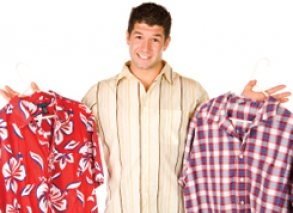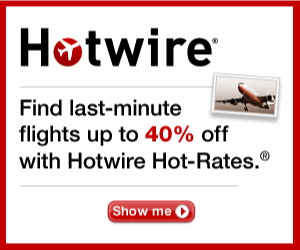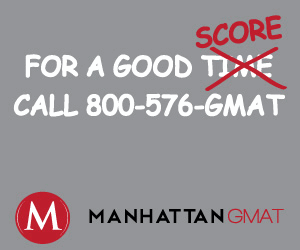What to Wear to Work

The office is not the place for bold and risqué fashion statements. So unless you work at American Apparel, leave the fuchsia leggings at home and abide by these rules: look polished, look clean, and look professional
.
The First Day
Arming yourself with outfits for the first few days of work will save you the stress of having to mad-dash-it to Banana Republic during your lunch break. However, it may be worth getting a lay of the land during your first week before you go on an all-out shopping spree. Different industries and offices have different standards, and everyone's got a different definition of business casual. While you're settling in, size up what other people in your office (namely, your peers) are wearing. If you’re still at a loss, there’s no harm in asking a coworker what flies and what is off limits. Note that summer-wear is typically more casual than year-round attire, so don’t rush out and buy an armload of Bermuda shirts (actually, don’t do this even if it is summer) because fall fashions will likely be a bit more formal.
Women (men, skip to second page)
Dress codes for women are often very difficult to decipher, so it’s a good idea to start off with the basics. This includes a skirt that hits just above the knee, slacks, flats or moderate heels, sweaters, blouses, collared shirts, and maybe some simple jewelry to spice things up a bit. Buy this stuff in basic colors (blacks, whites, neutrals) so that you can mix and match to maximize your wardrobe once you start adding other pieces. For casual days, pair your dressy items with more casual stuff (dark jeans, bright skirts).
The Checklist
Before you leave in the morning, measure yourself up against this checklist:
- Do I look like a slob? (a.k.a. are my pants wrinkled or is there cereal milk on my shirt?)
- Is my skirt too short? (a.k.a. Tina Turner called, she wants her clothes back)
- Is my neckline too plunging? (a.k.a. picking pens off the floor not advised?)
- Am I wearing too much makeup (a.k.a. do I look like I’m about to go out to a bar—as Boy George?)
- If I’m wearing flip flops or sneakers to walk to work, do I have an extra pair of dress shoes for a surprise meeting? (a.k.a. Murphy’s Law)
Women’s Clothing Stores
Luckily, there’s no shortage of go-to stores for women’s office attire. Banana Republic, J.Crew, and The Gap are always safe bets for basic dresses, collared shirts, slacks and blouses. Slightly pricier, Ann Taylor is a solid option for nice suit sets that work great in a more formal work environment.
Suggestions From the Field
“I love editor pants from Express and collared shirts from Club Monaco,” says Stephanie Johnson, 25, who works an at investment management firm. “Target also has some really great sweaters and work clothes at great prices. Most people don’t think of Target as a place to buy work attire, but I definitely have a few things from there.”
Kate Hughes, 25, who works in a “business casual” nonprofit in San Francisco says, “I usually buy work clothes from Target, Old Navy, Ross, Banana Republic, and some pants from Ann Taylor.
“I can pretty much wear anything I want except for jeans,” says Amy Levenson, 25, who works in book publishing. “But there’s also some strategy. You can’t walk in there every day with really nice clothes, cause then they’ll think they’re paying you too much. You have to walk a fine line to evoke just enough pity but still have respect for yourself and your appearance. I basically wear my old khakis, sweaters, and button down shirts from J.Crew, with flats. I used to work at J.Crew before I got this job, so it works out pretty well.”
To mix stuff up a bit, you also might hit up Zara, Anthropologie, or H&M, which all carry work-appropriate clothing with a bit more snazz.
Many “creative” industries can have fairly lax and wide-ranging dress codes—like advertising (think emo concert), magazine publishing (think runway show), and PR (think night on the town). But for the first week, it’s best to err on the conservative side. You may feel like a tool—but it’s better to be cautious. And assuming you don’t quit after your first week, you’ll have innumerable days ahead to dazzle them with your sense of style. As Jessica Skornicka, a 26-year-old advertising account manager puts it, “At creative shops, you’re sort of peer pressured into dressing with the times. If you don’t have the latest Seven for all Mankind jeans, you’re a loser and will never get ahead.” Clearly, she’s kidding, but you get the drift. For inspiration, check out the current issues of magazines like Lucky (“The magazine about shopping”) and InStyle, both of which regularly feature seasonal examples of appropriate office attire, or peruse fashion retail sites like Shop Bop and Blue Fly.
Men
For guys, it’s more simple. According to Project Runway mentor Tim Gunn, the basics of any man’s work wardrobe should include dark dress pants and collared long-sleeved shirts (for business casual dress codes), khakis and white oxford-cloth shirts (for more casual environments), and darker washed jeans and colorful striped shirts for Fridays. It’s probably a smart move to stock your closet with a few of these items before your first week.
Again, once you start, checking out what your colleagues are wearing around the office will help you aim your clothing purchases to the appropriate spot on the business-casual spectrum. A finance office in New York (very conservative, formal, don’t touch the suit) is naturally going to be governed by different guidelines than a design studio in Seattle (super-casual, comfortable, let’s go on a hike). So use your best judgment, but remember that it’s always better to be a bit overdressed (though refrain from breaking out the cuff links) than underdressed.
Men's Clothing Stores
Solid stops on a shopping route include J.Crew, Banana Republic, and Brooks Brothers for basic collared shirts and slacks, and stores like Bloomingdales, Saks, Nordstrom, Hickey Freeman, J.Press, and Charles Tyrwhitt for more formal wear. Of course, it all depends how nice you want to look and what you are willing to spend. A one-stop-shop like J. Crew could just do the trick for some people, and don't forget discount stores like Ross, Marshall's, and Target. But a few nice items from a specialty stores (e.g., shirts from Thomas Pink) can go a long way.
Suggestions From the Field
“I’d say most of the dress shirts I own are in shades of blue and white,” says Matt Kramer, 24, who works in a “business casual” sports marketing agency. “My normal work ‘uniform’ consists of khaki pants and a button-down shirt, dark shoes, and a matching belt. Lots of button downs from J.Crew, Gap, and Thomas Pink (for more expensive shirts), and khaki colored pants from J.Crew and Urban Outfitters.
In finance offices, the key is conservative. “One thing that I’ve noticed is that kids right out of college tend to wear shirts that are more like what I would describe as ‘club shirts,’” says Ryan Fagan, a second-year investment banking analyst. “Things with dark colors, or maybe flashy designs. Even though they are buttoned-down shirts, there’s a big difference. I would just stay away from things like that. Basically, guys in finance just wear wool slacks and button-down dress shirts. Shopping at places like Brooks Brothers makes this simple.” Also, he suggests trying different places to see which shirts fit you the best. “For example, Thomas Pink shirts are really broad and won’t fit a slim guy without going to the tailor. And Banana Republic shirts have a slimmer fit. Try going to a nicer department store to get your measurements taken, so they can point you in the direction of brands that will fit you best without tailoring.” Or, if you’ve got some time and money on your hands, you might try researching some cheap custom tailors in your area, or networking with some professional buddies to get the inside scoop.
Casual Friday
"Casual Fridays" can be even more intimidating than regular work days because you're being judged on what you actually wear rather than your "corporate uniform." Again, the best bet is to err on the conservative side (jeans and shirt, for example) the first time around to see how "casual" people really get. Then you can break out your Crocs and commando shorts. Remember that "casual Friday" does not extend across all offices, so if you have a meeting with a client, don't show up with a cowboy hat and a stupid grin on your face.
Bottom Line
The long and short of it is that appearance matters at the office. Foster an outward display of professionalism and hopefully your experience will catch up soon.






Comments
(0)POST YOUR COMMENT